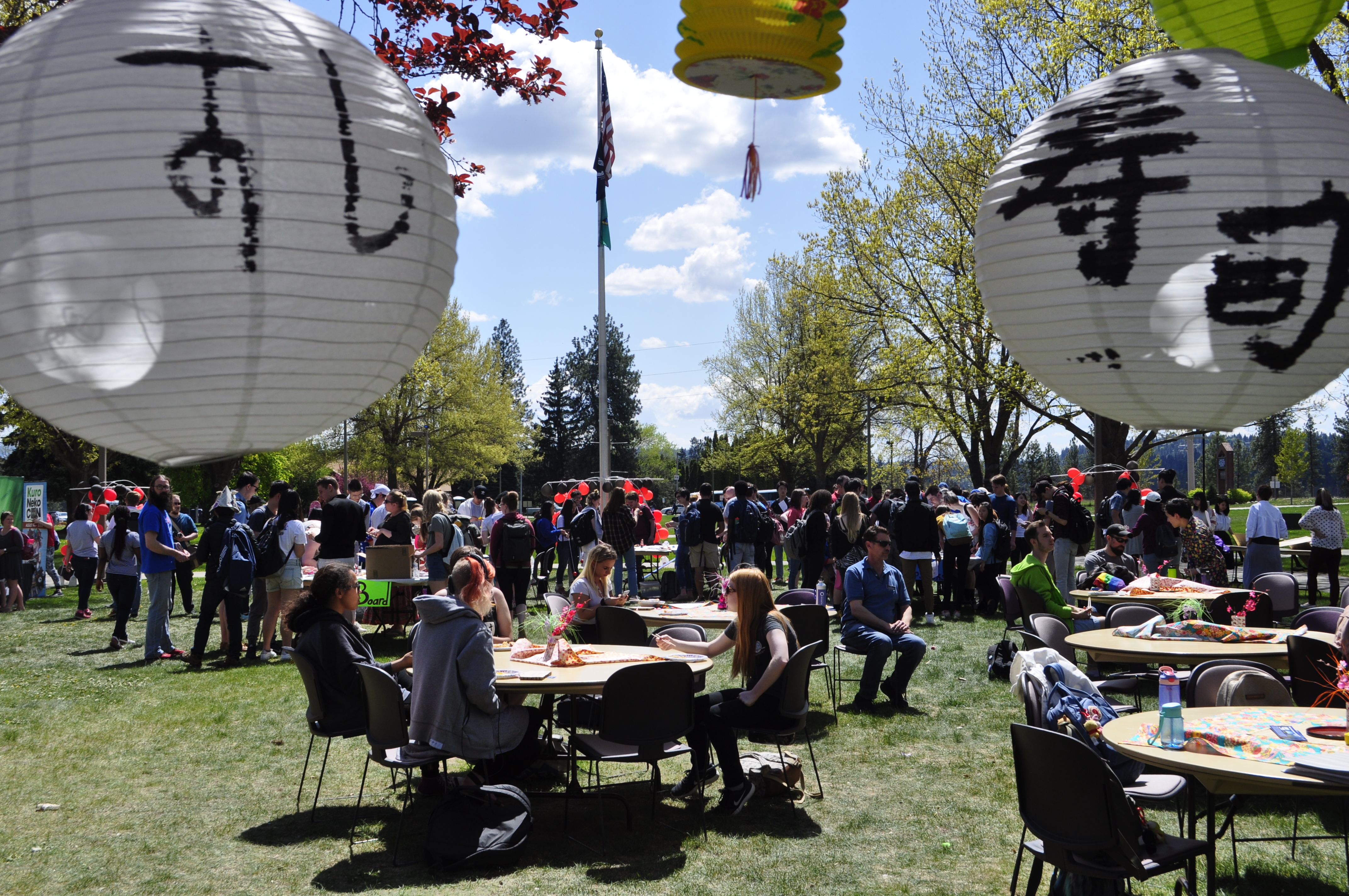Moving between booths and checking on the members of the Japan Club with their respective jobs, Saki Katayama helps to keep SFCC’s Japan Day on track.
The assistant student teacher is also the current adviser of the club. This is her second time being a part of Japan Day.
Out of the many booths that were participating May 8 in front of the SFCC library, Saki said that she was looking forward to the Calligraphy demonstration the most, or maybe wearing Yukatas. Calligraphy is an art form that consists of the written language, it is widely used in advertisement and professional art pieces. The Yukata is a traditional Japanese summer piece of clothing.
Among the booths, there were traditional Japanese games, a rather challenging chopstick game, and a chance for students and attendees to try on Yukatas.
One table with traditional Japanese games had daruma otoshi, a game with a hollow Daruma doll that is set in five stacking pieces. In the game, players try to knock out the blocks without toppling the whole thing. Like a jenga with a mini hammer. Kendama is a ball and stick game, a surprisingly difficult one. Regardless of which booth or activity it was, the people around them were smiling and laughing.
In addition to the booths run by the SFCC students, there were a few displays run by students from the Mukogawa Institute. These students were explaining their displays showing information about Japanese culture. One of which was run by two Mukogawa students. Their display was showing the dress code rules for different levels of education. They showed a few examples of the mandatory school uniforms for junior high, high school and grade school. The rules also apply to things like haircuts, piercings and bags. Once students get into University, however, there is no longer a mandatory uniform and they are allowed to wear what they choose, this freedom also applies to piercings and other personal attire.
Two other Mukogawa students were also running a display highlighting the differences between common Japanese snacks and sweets, and their American counterparts. The tastes are different with Japanese snacks drifting more for the salty taste instead of a sweet one.
“Soft candy and hard candy,” one of the students from the all-women’s school said. “The category for candies are more specific in Japan I think.”
Over the sounds of SFCC students, Mukogawa students, and general attendees, a Taiko performance boomed alongside the festivities.
Taiko refers directly to the drum that the drummer plays. Taiko music is also the first native Japanese music to become popularized throughout the world. The music is often characterized by the simultaneous strikes of Taiko group members creating one rhythmic and hard pounding sound. The drum is struck with two Taiko Bachi sticks as opposed to using the hand.
Two booths were selling manga and other Japanese pop culture items, such as plushies and dolls. Two booths were run by SFCC’s Anime and Japanese clubs.
No Japanese Day would be complete without some delicious Japanese food. Maki Sushi, Inari (rice wrapped around fried tofu), tonkatsu (Japanese fried chicken), and a few other side dishes were served.
“I’m looking forward to students exploring Japanese culture and food,” said Yasuka Huff, Japanese instructor at SFCC.
Traditional games, food, music, and information on a different culture who could ask for more?

